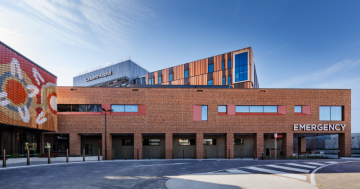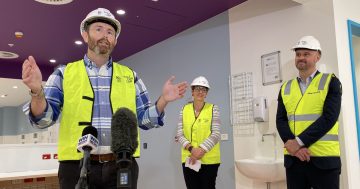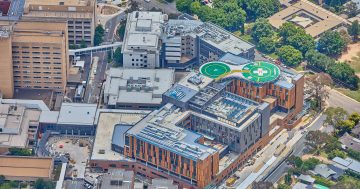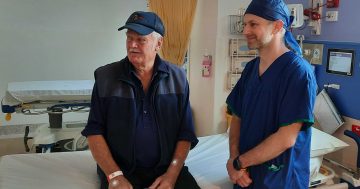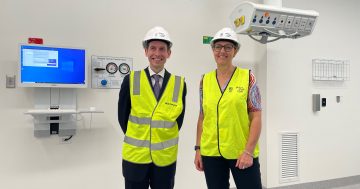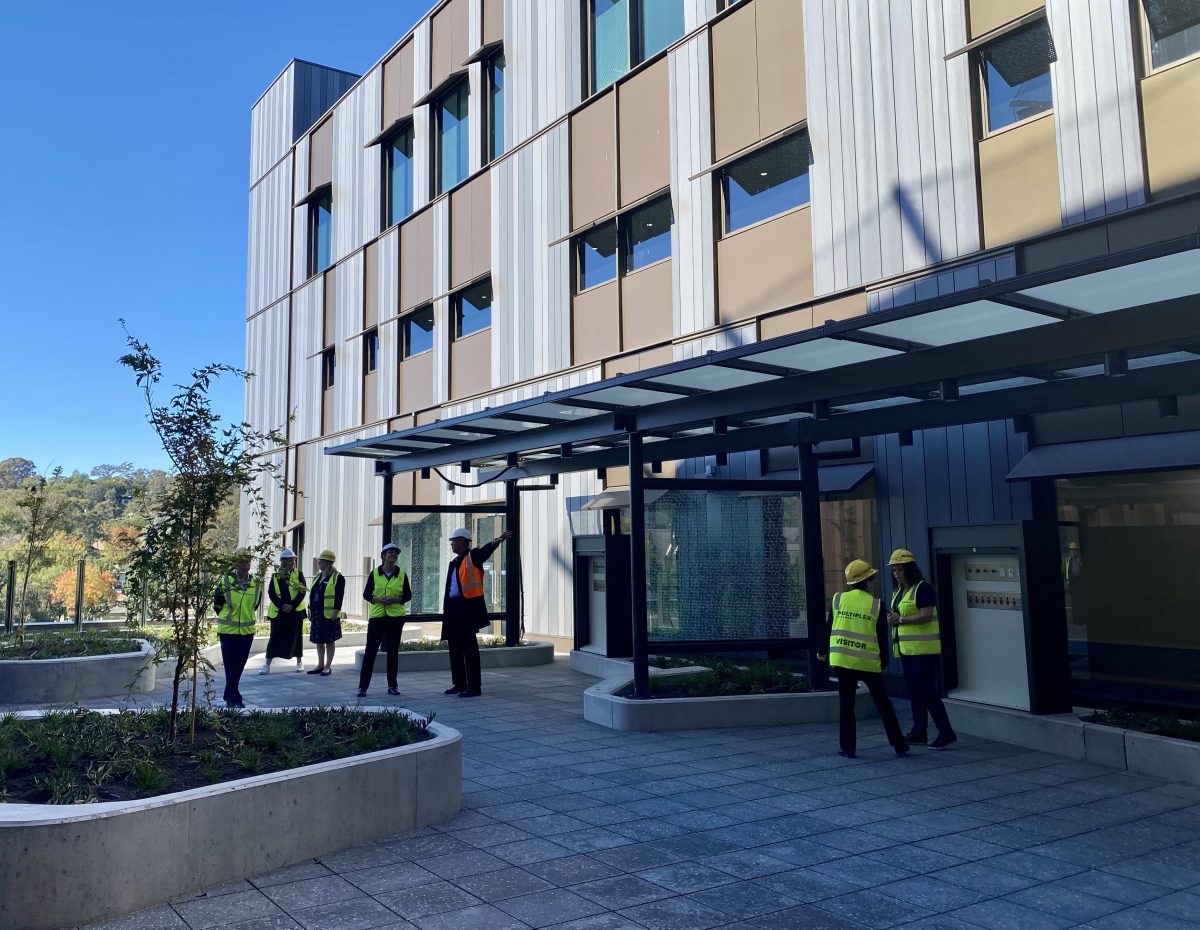
The new intensive care unit has specially designed outdoor areas to accommodate patients and their equipment. Photo: Claire Fenwicke.
Canberra Hospital will soon be able to care for more critically injured and ill patients with the opening of its new intensive care unit.
Located in the new Critical Services Building, the unit will initially open with 36 operational beds but will have enough beds and equipment to eventually care for 48 patients.
This includes four specially designed paediatric beds with an adjoining family lounge and play area for children who either need to be cared for in Canberra long-term or transferred to another hospital.
“We know that some of those kids are always going to have to be transferred to a children’s hospital in Sydney for the foreseeable future, but we’re also intent on ensuring we’re lifting our capability to care for sick and deteriorating children in the ACT,” Health Minister Rachel Stephen-Smith said.
“Obviously, the ICU is a space where sometimes people are dealing with very difficult and challenging circumstances that might have arisen very suddenly and families are quite traumatised, so having those separate family spaces to enable that support for the families … is very, very important.”
The paediatric beds can support care for adult patients when necessary.
The unit will initially open with 36 beds so that the existing unit can “lift and shift” to its new home and allow staff to adjust to the environment before the capacity is increased.
Ms Stephen-Smith said the space was one of the most “significant deliverables” for the Critical Services Building project with the capacity to expand to 60 beds as the region grew.
“Having 48 beds already fit out and ready to go means that there is nothing holding us back from doing those expansions over time in the next few years,” she said.
This would occur once the building’s new clinical training facility, which will allow for conferences and simulation training, is no longer needed.
Located on the same floor as the ICU, it will be used in the short term until a research, training and education precinct is built at the hospital, which is part of the overall hospital masterplan.
Ms Stephen-Smith described this as all part of the Tetris occurring to meet the masterplan’s vision, to provide the services and spaces needed today while getting ready to deliver more permanent spaces in the future.
“Having the potential for the clinical space to be re-converted into another 12-bed pod and create a 60-bed intensive care unit, as our city and region continue to grow, is really important for future-proofing the hospital,” she said.
“This space will allow us to continue increasing staffing and capacity as demand grows in the future.”
The new ICU bed spaces are significantly larger than what is currently on offer.
That’s because the equipment intensive care staff uses is much more extensive than it was even a decade ago.
ICU deputy director Tina Xu said extra space meant care could be delivered more efficiently and effectively.
“It not only provides improved patient experience but [allows us] to use a lot more equipment,” she said.
Other new features in the ICU include a procedure room for minor procedures that don’t require general anaesthesia, a multi-purpose therapy space for early integrated rehabilitation to support patient recovery, and a pod of 12 beds that can be isolated if there’s an infectious diseases outbreak.
Sheltered courtyards have also been designed specifically for ICU patients so they can get outside in their beds with their equipment, allowing them and their families to access fresh air and a change of scenery.
Staff are expected to start training in the new ICU from late May ahead of the Critical Services Building’s opening in late August.












